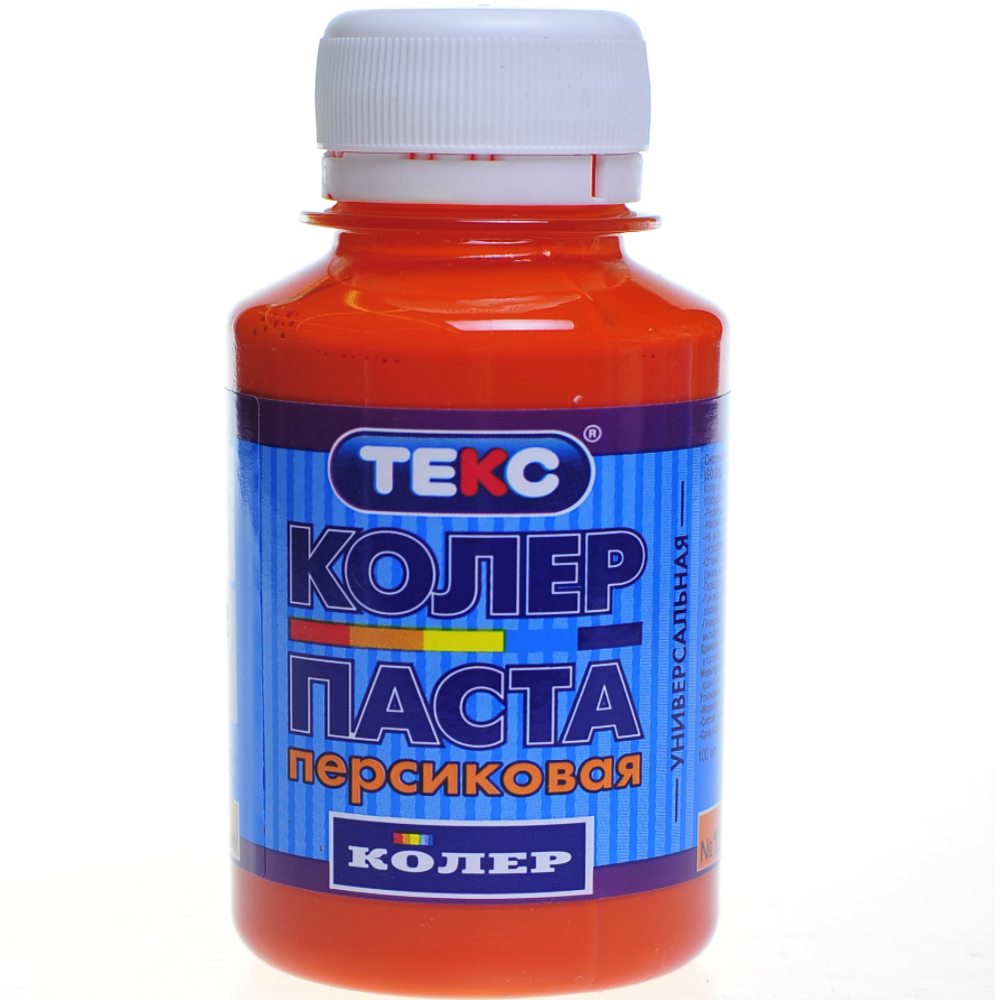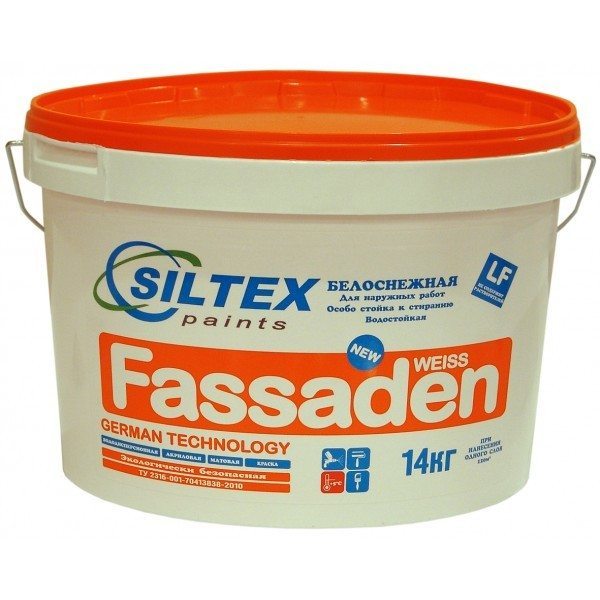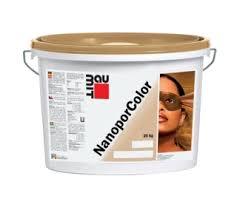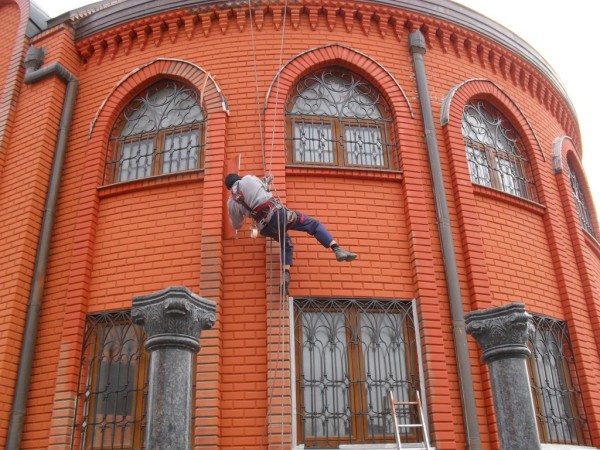Brick is one of the most common building materials. It is used not only for the construction of walls, but also for facing facades. Therefore, its decorative data in some cases is extremely important, and in order to improve them, they often resort to staining the brickwork.
However, improving the attractiveness of the material is not the only function of the paint. In addition, it protects walls from destruction, which can occur as a result of negative environmental influences. Next, we will consider the features of paint on brick and the technology of its application.
Paint properties
When choosing a coloring composition, you need to pay attention to its properties.
Exterior brick paint should have the following characteristics:
- Alkalinity- is one of the main requirements for the coloring composition for brick. The fact is that in the cement mortar used for masonry, there is alkali, which adversely affects paints that do not have this property.
- Lightfastness- the paint should not fade, delaminate or crack when exposed to sunlight.
- Water resistance- thanks to this property, the brickwork will be protected from atmospheric precipitation.
- Vapor permeability- unlike moisture, steam must pass freely through the paint. This property will allow the brick wall to "breathe", which will provide natural moisture exchange in the room.
- High level of adhesion, i.e. good adhesion to the painted surface.
- Resistance to mechanical damage.
Advice!
To improve the adhesion of the paint, it is necessary to apply an acrylic primer to the surface.

In addition to all of the above points, it is also necessary to study the technological and decorative properties of the paint. The latter include the possibility of tinting and reflectivity (creating a glossy, matte or semi-matt surface). Technological properties are in the speed of drying of the composition, its consumption, as well as the convenience and ease of application.
Choice of paint
Acrylic
Knowing the main characteristics that brick paint should have, choosing a suitable composition will not be difficult. If you study the properties of paints that are presented on the modern construction market, it turns out that acrylic paints are best suited for these purposes. They have all of the above characteristics, including alkalinity and vapor permeability.

Such compositions are based on acrylic resins, which create a strong film on the surface to be painted that can protect the brick from environmental influences. Another advantage is their quite affordable price, which is also important when choosing building materials.
Advice!
For bricks that are difficult to paint, a special method of applying a coloring composition has been developed. It consists in mixing acrylic primer with acrylic facade paint on brick.
This mixture fits perfectly and retains its color for 8-10 years.
Water-based
When performing interior work, it is allowed to use water-based paint or paint made on an adhesive basis. However, it should be borne in mind that these compounds do not have sufficient waterproofing, so they cannot be used for finishing rooms with high levels of humidity.
For the rest, the instructions for the material will help to determine the choice, which usually indicates the scope of its application and the main characteristics.

Separately, it should be said about the mineral facade paint, which is also perfect for painting brick surfaces. This composition is based on cement, due to which it has a high degree of water resistance and good vapor permeability.
Since this paint and varnish coating tolerates regular onslaught of moisture and other atmospheric influences, it will be most appropriate.
One of the main advantages of this paint is that it can be restored. For example, if after some time the wall loses its original appearance, then you can use a special solution that will eliminate damage to the coating and restore its natural color.
Note!
You can start painting bricks no earlier than a month after the wall has been erected.
During this time, leaching of the material occurs.
If the finishing needs to be done earlier, then a special primer must be used before painting.
Brick painting technology
Preparation of the base
By itself, painting a brick house from the outside is nothing complicated and unusual. The coloring composition is applied in the same way as on other types of surfaces.
To do this, you can use:
- Roller;
- Brush;
- Spray gun.

In the photo - cleaning a brick wall
The only thing that deserves special attention is the preparation of the surface of the walls. If you do not want to paint again in a month, then this stage must be taken very seriously. This applies not only to the facades of buildings, but also to any other external brick surfaces that need to be painted.
So, before you paint a brick house outside, you need to follow these steps:
- First of all, you need to make sure that the wall is dry.
- Then you should clean the surface of all contamination, if any. This includes dirt, dust, old finishes, etc.
- If there are traces of mold or mildew on the surface of the walls, then they must be treated with a metal brush or a grinder with a special nozzle in the form of a brush. In the same way, you can get rid of efflorescence, which are water-soluble salts.
- Then the brick must be rinsed well with water, however, without the use of detergents and other chemical solutions - the water must be clean. Of course, after this, the walls must be allowed to dry well, at least for a day.

Padding
Apply the primer in an even layer using a roller. As a rule, this procedure is performed in two passes - after the first layer of the solution has dried, the walls are processed again.

Painting the walls
After the primer has dried, you can proceed directly to painting the brick walls.
The work is done as follows:
- First of all, you need to stir the paint and, if necessary, add color to it. You can pre-mix a small amount of paint to determine the proportions.
- Then the paint is applied in one of the above ways. The most important thing is to make the layer even, without sagging. So that there are no color differences on one wall, it is necessary to apply the composition from corner to corner in one go.
- If, after applying the first layer of paint, flaws remain on the surface or the color of the brick appears through the paint, then the procedure can be repeated.
That is, in fact, the whole painting technology. Now, after finishing the walls, the surface must be protected from precipitation and direct sunlight until the paint is completely dry.
Output
The most difficult thing when painting a brick with your own hands is to choose the right coloring composition and perform a high-quality surface preparation. The recommendations given above will help to cope with this task.
Otherwise, the staining process should not cause any difficulties. Additional information on this topic can be found in the video in this article.




